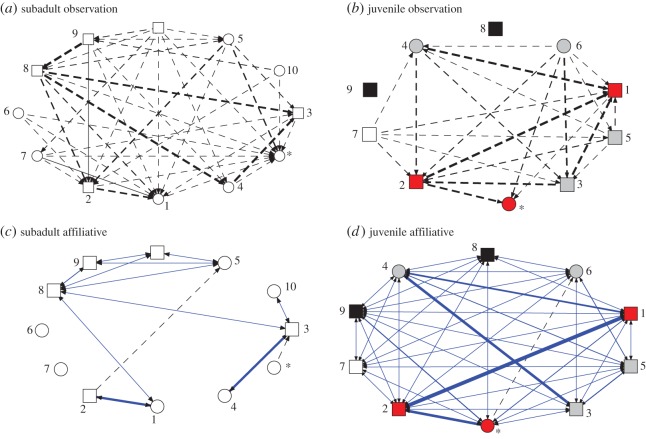Figure 2.
Observation and affiliative interaction networks. Arrows in the observation networks (a,b) indicate gaze direction of naive ravens, and point towards the informed ravens whose task-solving behaviour they observed. Arrows in the affiliative interaction networks (c,d) point towards the recipient of the affiliative interaction. Circles represent females, rectangles represent males. Line thickness is proportional to the connection frequency (strength). Blue solid lines indicate reciprocal connections, black dashed lines indicate non-reciprocal connections. All connections in the observation network are non-reciprocal; the observation network includes only the observations made by naive ravens before they solved the task for the first time. Numbers indicate task-solving order, asterisks indicate the trained females. Same coloured nodes in juveniles (b,d) represent kin groups. The nodes are spatially arranged in a circle layout, based on ID, for the ease of comparison between networks.

